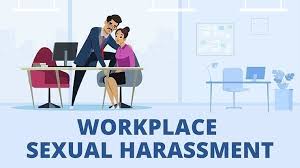Comprehensive Strategies for Preventing Sexual Harassment in the Workplace

Sexual harassment in the workplace is a pervasive issue that negatively impacts employees and the overall organisational culture. It can lead to psychological distress, reduced productivity, increased turnover rates and potential legal consequences for employers.┬Ā
Organisations must adopt a proactive approach to prevent and address sexual harassment by establishing clear policies, providing effective training and fostering a culture of respect and inclusivity. By implementing robust prevention strategies, companies can create a safe and supportive work environment where employees feel protected and valued.
Understanding Sexual Harassment
Sexual harassment encompasses a range of unwelcome behaviours of a sexual nature that create a hostile work environment or involve coercion related to employment benefits. Understanding the different forms of sexual harassment is essential to prevent it effectively.
Examples of Sexual Harassment
- Repeated unwanted flirting or requests for dates despite being rejected.
- Making derogatory comments about an employeeŌĆÖs gender or appearance.
- Sending sexually explicit messages, emails, or texts.
- Inappropriate physical contact, such as hugging, massaging, or brushing against someone intentionally.
- Spreading rumors about an employeeŌĆÖs sexual activity or personal life.
Organisations must educate employees about these behaviors to prevent workplace harassment effectively.
Legal Framework and Employer Responsibilities
Key Laws and Regulations
Employers must comply with legal frameworks that protect employees from sexual harassment, including:
1. Equality Act 2010
- Protects employees from workplace discrimination, including sexual harassment.
- Requires employers to take reasonable steps to prevent harassment.
2. Worker Protection Act 2023
- Strengthens workplace protections by requiring proactive prevention measures.
- Encourages organisations to provide awareness training to all employees.
Employer Responsibilities
- Implement a zero-tolerance policy on sexual harassment.
- Conduct regular training programs for employees and management.
- Establish confidential and accessible reporting mechanisms.
- Take immediate and appropriate action when complaints arise.
By adapting compliance courses and training for businesses, companies can stay compliant with evolving regulations while promoting ethical workplace behavior.
Creating a Clear Company Policy
A comprehensive sexual harassment policy is the foundation of a safe and respectful workplace. Employers must develop and communicate a clear, written policy that outlines expectations, procedures and consequences.
Key Components of a Sexual Harassment Policy
- Definition of Sexual Harassment: Clearly outline what constitutes inappropriate behavior.
- Reporting Procedures: Provide multiple channels for employees to report harassment (e.g., HR, anonymous hotlines, designated supervisors).
- Confidentiality Protections: Ensure that complaints are handled discreetly to protect the identities of those involved.
- Zero-Tolerance Statement: Make it clear that harassment will not be tolerated at any level of the organisation.
- Disciplinary Actions: Specify consequences for employees found guilty of harassment, ranging from warnings to termination.
Communication and Accessibility
- The policy should be included in employee handbooks and onboarding materials.
- It should be accessible on the companyŌĆÖs intranet or website.
- Employees should be required to acknowledge receipt and understanding of the policy.
Training and Education Programs
Effective sexual harassment prevention training equips employees and managers with the knowledge to identify, prevent and respond to harassment.
Types of Training
- General Employee Training
- Helps employees recognise inappropriate behavior.
- Teaches employees how to report harassment safely.
- Management and Supervisor Training
- Trains leaders on handling complaints effectively.
- Encourages ethical behavior and accountability.
- Bystander Intervention Training
- Empowers employees to speak up when they witness harassment.
- Encourages active participation in creating a respectful workplace.
- Refresher Training
- Ensures ongoing compliance with laws such as the Worker Protection Act 2023.
- Reinforces the importance of workplace ethics and behavior.
Investing in training reduces legal risks while fostering a respectful work environment.
Establishing Reporting Mechanisms
Employees must feel safe reporting harassment without fear of retaliation. Employers should establish a clear and accessible reporting process.
Key Reporting Mechanisms
- Multiple Reporting Channels: Employees should be able to report harassment to HR, a designated supervisor, or through an anonymous hotline.
- Anonymous Reporting Options: Online portals or third-party reporting services can protect employee identities.
- Clear Investigation Procedures: Employers should outline how complaints will be handled, including timeframes and confidentiality protections.
- Non-Retaliation Policies: Employees should be assured that they will not face negative consequences for filing a complaint.
A well-structured reporting system encourages employees to speak up and helps prevent further incidents.
Support Systems for Victims
Victims of sexual harassment should have access to resources that provide emotional and legal support.
Available Support Systems
- HR Support: Designated HR personnel trained in handling harassment complaints sensitively.
- Counseling and Mental Health Services: Employee Assistance Programs (EAPs) to help victims cope with emotional distress.
- Legal Assistance: Guidance on filing formal complaints or seeking legal action.
- Peer Support Groups: Safe spaces for employees to share their experiences and receive support.
Providing these resources reassures employees that their well-being is a priority.
Regular Review and Update of Policies
To remain effective, workplace policies must be regularly reviewed and updated based on employee feedback, legal changes and evolving workplace dynamics.
Best Practices for Policy Updates
- Conduct annual policy audits to assess effectiveness.
- Seek employee feedback through surveys and focus groups.
- Stay informed about legal and regulatory changes that impact workplace harassment laws.
- Integrate harassment prevention into broader compliance training programs.
Regular updates ensure that policies remain relevant and are enforced consistently.
Fostering an Inclusive Company Culture
A workplace culture rooted in respect, diversity and inclusion is key to preventing sexual harassment. Employers can take proactive steps to create a safe and supportive work environment.
Strategies for Cultivating an Inclusive Culture
- Promote Diversity and Inclusion: Encourage diverse leadership and hiring practices.
- Encourage Open Communication: Create forums where employees can voice concerns freely.
- Recognise Ethical Behavior: Reward employees who contribute to a respectful workplace.
- Lead by Example: Senior management should model appropriate behavior and enforce policies consistently.
By fostering an inclusive and respectful workplace, organisations can reduce harassment risks and improve overall employee satisfaction.
Preventing sexual harassment requires a proactive and comprehensive approach, including clear policies, regular training, strong reporting mechanisms and a culture of inclusion and respect.┬Ā
Organisations that commit to these strategies create a safer and more productive work environment while reducing legal risks. Addressing sexual harassment is not just a legal obligation but a crucial step toward building a positive workplace where every employee feels valued and respected.



